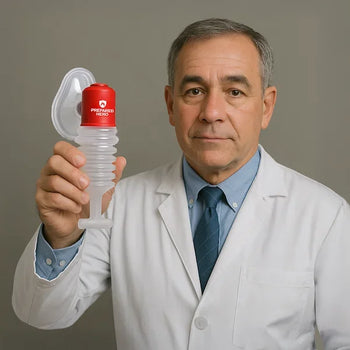Where you put your smoke detectors matters just as much as installing them. Proper placement makes sure they can detect...
Air purifiers are becoming an essential in many homes, especially those dealing with allergies or pet dander. But how do they actually work? What does an air purifier do? Where should you put yours? In this guide, we’ll talk about air purifiers, how they work, their benefits, and how to get the most out of yours.
What Is an Air Purifier?

An air purifier helps clean the air in a room by removing substances you don’t want to breathe in. These include dust, pollen, pet dander, smoke, and other tiny particles. In particular, the air purifier pulls the air in, runs it through filters, and pushes the cleaner air back out into the room.
Most portable air purifiers you see today can handle both particles and gases. However, they usually need more than one filter to do the job right. That’s why many of them have different filters: one for particles, another for gases, and sometimes an extra one for odors or chemicals. These purifiers are designed to clean air in single rooms, not your whole house. Whole-house systems exist, but those are built into your HVAC (Heating, Ventilation, and Air Conditioning) system.
How Do I Know If I Need an Air Purifier?

If your home feels stuffy, smells linger, or allergies won’t quit, it might be time to take a closer look at your air quality. Here's what to watch out for:
1. You have allergy or asthma symptoms indoors.
Are you often sneezing, coughing, or having a stuffy nose while at home? There might be allergens like dust, pet dander, or pollen in your air. An air purifier can help reduce those.
2. There are odors that won’t go away.
Strong smells from cooking, pets, or mildew that seem to hang around mean your air needs to be cleaned. A purifier with an activated carbon filter helps get rid of those odors.
3. You see dust and pet hair everywhere.
An air purifier traps airborne particles like dust and fur. As a result, you clean less.
4. Your air feels stale or stuffy.
Indoor air can feel heavy or hard to breathe, even with windows open. A purifier helps circulate and refresh the air.
5. You live near traffic or construction.
Busy roads, factories, or building sites release pollutants into the air. An air purifier can filter out those fine particles.
6. You use fireplaces or gas appliances.
Combustion from stoves or fireplaces can release smoke and pollutants into your home. A purifier helps clean them out.
7. You want better sleep.
Breathing clean air helps your lungs, heart, and brain work better. It lowers your risk of asthma, heart problems, and even stress. You’ll sleep better, get sick less, and feel more alert.
How Do Air Purifiers Work?

Air purifiers can make a big difference in your air quality. Simply put, it pulls air in, runs it through a series of filters, and pushes the cleaned air back out. In this case, the filters do the heavy lifting.
Going into the specifics, the fan inside the purifier draws air into the machine. Once the air is inside, it passes through a pre-filter. It catches larger particles, such as dust, pet hair, and lint, so it doesn’t clog the finer filters too quickly.
After this, the HEPA (High Efficiency Particulate Air) filter deals with minute particles, like pollen, mold spores, and certain bacteria. As a result, it helps people with allergies and asthma. Plus, there’s usually an activated carbon filter that catches odors, gases, and chemicals like VOCs (volatile organic compounds). These compounds are commonly imperceptible, but some have detectable scents. Once the air is clean, the purifier sends it back out into the room. Just let it run, and it quietly keeps cycling the air through.
Most portable air purifiers work this way. They’re lightweight and easy to move around. Some can even sit on your desk or be mounted on the wall, depending on what you need.
What Does an Ionizer Do in an Air Purifier?
An ionizer in an air purifier works a bit differently from a regular filter. Instead of trapping particles, it releases negative ions into the air. These ions attach to things like dust, pollen, smoke, and pet dander, which are positively charged. Once they latch on, the particles clump together and get heavier. This makes them fall out of the air and settle on surfaces like floors, furniture, or counters.
So while the ionizer doesn’t remove the particles from the room completely, it helps get them out of the air. As a result, they’re easier to clean up when you vacuum or dust. Just one thing to keep in mind: some ionizers can produce ozone, which can be bad for your lungs. Most newer models are made to avoid this, but it’s always good to check before buying.
If you're looking for an air purifier and see one with an ionizer, you now know what it does. It helps clear the air by zapping particles and getting them to settle where you can wipe them up. It's not a filter, but it can help make your air feel fresher.
What Are the Benefits of an Air Purifier?

Thinking about getting an air purifier but not sure if it’s worth it? These machines do more than just clean the air. Here are the top benefits of air purifiers:
1. Cleaner Air
Air purifiers improve your home's air quality by removing airborne irritants like dust, pollen, and pet dander. This results in a fresher and healthier living space.
2. Helps with Allergies and Asthma
Do you struggle with sneezing, coughing, or congestion? An air purifier can help by cutting down on common triggers like dust mites, mold spores, and pet hair.
3. Supports Better Breathing
Improved air quality reduces the burden on your lungs. This helps you breathe better, especially if you have respiratory issues.
4. Helps Get Rid of Odors
Cooking smells, pet odors, and smoke don’t have to stick around. Air purifiers with carbon filters neutralize bad smells.
5. Improves Sleep
Cleaner air can help reduce nighttime congestion or irritation, so you can sleep more soundly and wake up more refreshed.
6. Less Dust Around the House
An air purifier can trap airborne dust before it settles, which means less cleaning and fewer dusty surfaces.
7. Helps Your Heart and Lungs
Some studies suggest that using air purifiers, especially in polluted areas, could support heart and lung health by cutting down exposure to harmful particles.
Is There a Downside to Air Purifiers?

Air purifiers are helpful, but they’re not perfect. Before you buy one, it’s smart to know the downsides, too.
First, let’s talk about cost. An air purifier can cost you a few hundred dollars, while high-end models can go over a thousand. On top of that, most of them need replacement filters every few months, which can get pricey, especially if you're using HEPA filters. You’ll also pay more for electricity, especially if you’re running your purifier all day.
Next up is noise. Air purifiers use fans to move air. Some can be loud on high settings, depending on the model. This is something you should consider if you’re sensitive to noise.
Another downside is limited coverage. Most air purifiers are built for one room. So, you need more if you want clean air throughout your house. Plus, not all purifiers remove gases or VOCs unless they have special filters. Leaving windows open or not cleaning the unit can also decrease its performance.
There are also a few health concerns. Some ionizing models create ozone, which can irritate your lungs. Some people also say purifiers make the air feel dry, which causes skin or sinus irritation.
Finally, there’s maintenance. You’ll need to clean the machine and change filters regularly. Skipping it makes it way less effective. You should also be careful with big claims because real results can vary from home to home.
How Long Does an Air Purifier Take to Clean a Room?
While air purifiers do not offer immediate results, your air quality can usually improve within two hours. The exact timeframe is influenced by several factors, including room size, the purifier's strength, and the initial air quality.
A decent purifier can clean the air in a small room in as little as 30 minutes. You might notice less dust, fewer smells, or easier breathing. On the other hand, a purifier should run in larger spaces or open areas for a few hours for the same results.
In addition, you need to wait several hours if you're trying to remove strong pollutants like smoke, pet odors, or chemical smells. Air in rooms with poor ventilation will also take longer to clean.
To get a better idea of how fast a purifier works, check its CADR (Clean Air Delivery Rate). The higher the number, the faster it filters the air. You should look at the ACH (Air Changes per Hour) as well. A higher ACH means it refreshes the air more often, which helps clean your space faster. Run your air purifier regularly, especially in rooms you use the most, for the best results.
Where Is the Best Place to Put an Air Purifier?

Placement matters more than you might think. The best spot is somewhere central and open, where the purifier can pull in air from all directions without anything blocking it.
Don’t stick it in a corner or behind furniture. Give it room to breathe and aim for at least three to six feet of space around it for better airflow.
Place the purifier where most of the dust or smells come from (near a window, kitchen, or litter box). Just avoid putting it too close to heat sources, vents, or electronics because they can mess with how the unit works, cause permanent damage over time, or start a fire. Given this, having a fire safety kit with fire blankets and fire sprays nearby helps.
In short, give your purifier space, keep it clear of heat and blockages, and place it near problem spots. Doing these helps your purifier clean your air more efficiently.
What Is the Lifespan of an Air Purifier?
Most air purifiers last for five to ten years, depending on how well they’re made and how often you use them. The motor is usually the only moving part, and it's built to run for at least 10,000 hours. If you use it for around six hours a day, that adds up to about four to five years minimum. However, many units last longer with good care.
That said, the filters won’t last nearly as long. Depending on the model and air quality in your home, you’ll probably need to replace them every few months to a year. Regular cleaning and maintenance also go a long way in keeping your purifier running smoothly for years.
Should Air Purifiers Be Left on All the Time?

It might seem smart to turn off your air purifier at night or when you leave the house to save energy, but it’s actually better to leave it on all the time. The reason? As soon as it’s off, pollutants like dust, dander, mold spores, viruses, and other allergens can quickly build up again in the air.
Running your air purifier 24/7 helps keep your indoor air clean and consistent. It’s helpful if you have allergies, pets, or respiratory issues. When the purifier runs continuously, it’s constantly removing new particles as they enter the air instead of letting them settle and spread.
Plus, modern air purifiers are built for round-the-clock use. Many models have timers or auto modes that adjust their settings based on how clean the air is. They’re also energy-efficient, so running them non-stop doesn’t usually cause a big jump in your power bill.
The only extra thing you’ll need to keep in mind is changing the filters more regularly, since they’ll fill up faster with constant use. But overall, keeping your air purifier on all day and night is one of the best ways to keep your air clean.
Conclusion
Air purifiers make a big difference in how your home feels and how you feel in it. They offer a lot of benefits, from cleaner air to better sleep. Whether you need one in your bedroom, living room, or workspace, using it the right way helps you breathe better every day.
Do you want reliable, easy-to-use, and affordable tools to put out small air purifier fires before they spread? Check out Prepared Hero’s fire prevention tools here, and get up to 51% off on certain items. Stay prepared, hero!


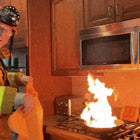 Fire
Fire Safety
Safety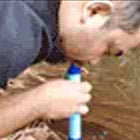 Survival
Survival Protection
Protection New
New
 Fire
Fire Safety
Safety Survival
Survival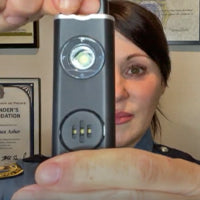 Protection
Protection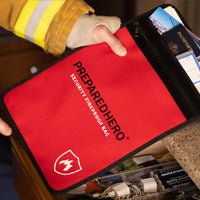 New
New





